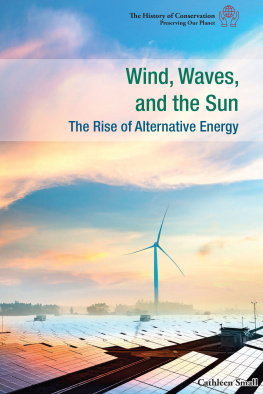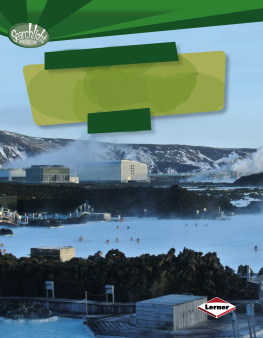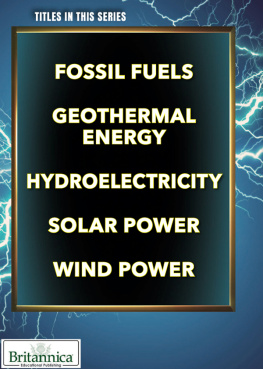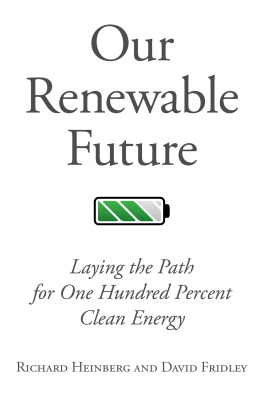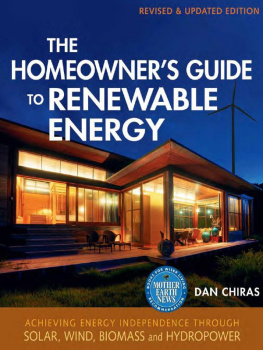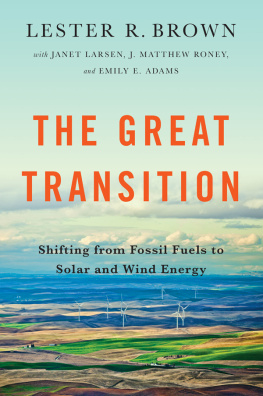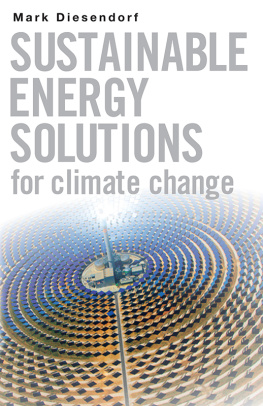ENERGY
WHAT EVERYONE NEEDS TO KNOW
ENERGY
WHAT EVERYONE NEEDS TO KNOW
JOS GOLDEMBERG


Oxford University Press, Inc., publishes works that further
Oxford Universitys objective of excellence
in research, scholarship, and education.
Oxford New York
Auckland Cape Town Dar es Salaam Hong Kong Karachi
Kuala Lumpur Madrid Melbourne Mexico City Nairobi
New Delhi Shanghai Taipei Toronto
With offices in
Argentina Austria Brazil Chile Czech Republic France Greece
Guatemala Hungary Italy Japan Poland Portugal Singapore
South Korea Switzerland Thailand Turkey Ukraine Vietnam
Copyright 2012 by Oxford University Press, Inc.
Published by Oxford University Press, Inc.
198 Madison Avenue, New York, New York 10016
www.oup.com
Oxford is a registered trademark of Oxford University Press
All rights reserved. No part of this publication may be reproduced,
stored in a retrieval system, or transmitted, in any form or by any means,
electronic, mechanical, photocopying, recording, or otherwise,
without the prior permission of Oxford University Press.
Library of Congress Cataloging-in-Publication Data
Goldemberg, Jos, 1928
Energy: what everyone needs to know / Jos Goldemberg.
p. cm.
Includes bibliographical references and index.
ISBN 978-0-19-981292-9 (pbk. : alk. paper)
ISBN 978-0-19-981290-5 (hardcover : alk. paper)
1. Energy conservation. 2. Energy consumption.
3. Energy development. 4. Energy industries. 5. Power resources.
I. Title.
TJ163.3.G65 2012
333.79dc23 2011044525
1 3 5 7 9 8 6 4 2
Printed in the United States of America
on acid-free paper
CONTENTS
Units of work, energy, and power |
Energy needs for different activities |
Population and stages of development |
The main sources of energy |
The worlds primary energy sources (2008) |
The worlds final uses of energy2008 |
Fossil fuel reserves and consumption |
Fossil fuel reserves in different regions of the world (in percentages) |
Renewable energy production, technical and theoretical potentials |
Typical power density of energy sources |
Comparison of the power generated from different energy sources |
The origin of CO2 emissions |
Major oil spill disasters |
The cost of electricity production |
OECD final energy consumption shares (%) |
Non-OECD final energy consumption shares (%) |
Worlds final energy consumption shares (%) |
Energy consumption for different transportation modes |
Fludds perpetuum mobile machine |
Stages of development and energy consumption per capita |
The sources of energy used since 1850 |
The Earths energy flows |
Relation between gross domestic product (GDP) per capita and per capita energy use (2008) |
Long-term historical evolution of energy intensity for industrialized countries |
Relation between the Human Development Index and per capita energy use (2008) |
The worlds primary energy supply (2008) |
Evolution in the steam engines efficiency |
Sankey diagram for the conversion of heat into work |
Sankey diagram for the US energy system |
The evolution of the price of oil |
The future of oil production |
The greenhouse effect |
Energy is an essential ingredient of life. Without energy there is no movement, no moving machinery, no telecommunicationno human life. At the dawn of civilization, energy needs were very modest; humans only needed enough energy, which was obtained through the food they collected and ate, to remain alive. The amount of energy that one human needed per day at this time equaled the amount contained in a cup of petroleum. Today, each of us needs at least one hundred times more energy per day, which, worldwide, means billions of barrels of oil and coal per year to run our automobiles and trucks, and coal, hydroelectricity, and nuclear reactors to generate electricity. Without energy our civilization would come to a halt. The problem is that in the 21st century almost all of the energy we use originates in fossil fuels (coal, petroleum, and gas). Such dependence creates serious problems that threaten our way of life: it exhausts the reserves of fossil fuels and results in environmental problems, particularly the warming of the Earth. In order to face such problems and do something about them, one should know more about energy. We will try to do that by answering a number of leading questions organized into five sections:
HOW IS ENERGY USED TODAY? What are the human needs for energy, and how do they relate to economic growth and other indicators of well-being?
THE WORLDS PRESENT ENERGY SYSTEM: What are the current primary sources of energy and how are they used?
THE PROBLEMS OF THE PRESENT ENERGY SYSTEM: What are the problems faced by the present energy system?
TECHNICAL SOLUTIONS AND POLICIES: What are the technical solutions to present energy problems and what policies could bring them about?
NONTECHNICAL SOLUTIONS: Are there nontechnical solutions to the present energy problems?
Before doing that, in a chapter entitled ENERGYThe basic concepts we will summarize some ideas that will be useful in understanding subjects that appear later in the book.
ENERGY
WHAT EVERYONE NEEDS TO KNOW
1
ENERGY
The Basic Concepts
In order to live and move around, human beings need to overcome gravity, or the force of attraction that the Earth exerts on all objects. They must also overcome other obstacles to movement, such as friction. With muscular effort, humans manage to overcome such obstacles and thus lift bodies or set them into motion. There are a variety of forces in nature, aside from the force of our muscles.
Isaac Newton (16421727) named force any agent capable of causing bodies to move. He established a relation that determines the amount of force necessary to cause a certain movement:
force (F) = mass (m) acceleration (a).
Forces are measured in newtons (N). The gravitational force on 1 kilogram (kg) of matter is 9.8 N.
Frequently, it is not enough to apply a force to a body to make it move. For example, the horses that pull a wagon must also overcome the friction that exists between the wagon and the road.
When an object falls from a given height above the surface of the Earth, the force of gravity (F) results in a quantity of work (W) defined as the product of the force and the distance the object travels (d):
work (W) = force (F) distance (d).
The unit commonly used for work is the joule (J), which is the energy needed to lift a small 102-gram (g) apple 1 meter (m) against the Earths gravity.
Next page

